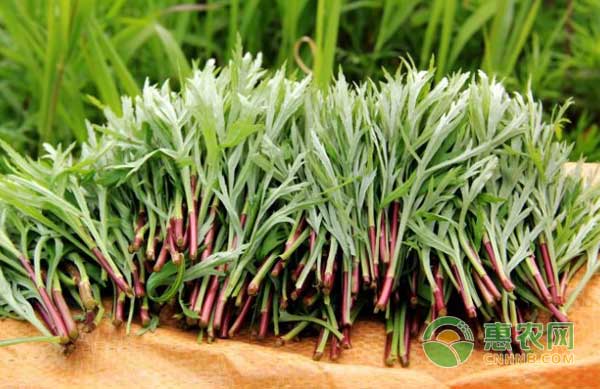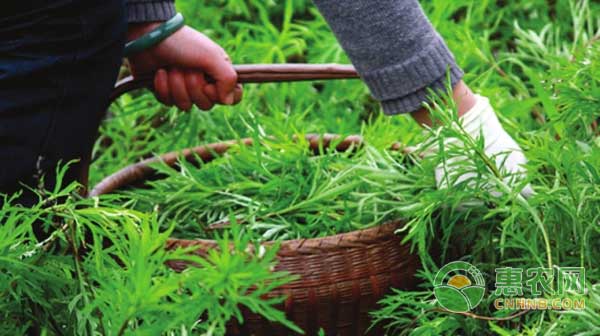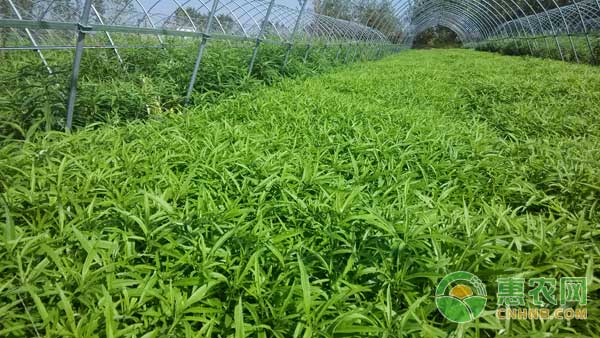Artemisia scoparia, also known as Artemisia argyi, Artemisia scoparia, its fresh stem can be eaten as a vegetable, crisp and delicious, tastes delicious, tastes delicious, and contains a lot of nutrients. Artemisia selengensis also has a therapeutic effect, which has the effects of clearing away heat and detoxifying, preventing toothache and sore throat. Its planting prospects are broad.

Wild or open field cultivation of Artemisia selengensis is generally germinated in March to Xie Miao in September-October. Artemisia selengensis has wide adaptability and can be cultivated in most areas of southern China. In order to meet the market demand, it has been used in greenhouses or double-film covering for anti-season cultivation in recent years, and it has gained higher benefits before and after the Spring Festival. The cultivation techniques of the high yield of Artemisia selengensis (2000-2500 kg per 667 m2) are introduced as follows:
a variety selection
Choose the Artemisia selengensis variety or native domesticated species with fast growth rate, good commodity performance and high yield.
Two terrain choices
Artemisia sinensis is suitable for damp and drought, and should choose soil with flat terrain, convenient drainage and irrigation, deep soil layer and high organic matter content, especially sandy soil.
Three-place fertilization
Planting Artemisia sphaeroides should be deep-rooted so that the sage can be rooted and germinated. The growth period and long harvest period of Artemisia selengensis are long, and long-lasting fertilizer is needed. Therefore, it is necessary to layer and re-apply the base fertilizer: generally 667m2 succulent organic fertilizer 3000-4000 kg or high-quality bio-organic fertilizer 300-500 kg+ ammonium bicarbonate 100kg+ Calcium phosphate 50kg + compound fertilizer 50kg.
Ditch support: 120-140cm wide (groove), wide and deep trenches are 20-30 cm made of sorghum, not only convenient for field management, but also drainage and anti-staining and furrow irrigation. Spray herbicides to prevent weeds when used as a cockroach. Choose 72% Duer 60ml or 48% Trifluralin 100-150ml per acre. After the trench is well placed, the water is poured once, and the ditch is not filled with the alternative type and cutting.

Four-in-one planting
Selection: 7 to mid-September, preferably in mid-August. Select the stubble, disease-free seedlings, remove the lignified and young parts at both ends, cut into 10cm long cuttings, and leave 2 full buds at the top of each section. The lower end of the cuttings is cut into bevels for cutting, and the amount of seeds per acre is about 250-300kg.
Cuttings: immersed in water 3 days before cutting. After the cuttings are selected, the ABT rooting powder 100-150ppm solution can be used to soak the base to promote the rooting to increase the survival rate. Then, according to the row spacing of 10 to 15 cm and the plant spacing of 7 to 10 cm, the soil is inserted into the soil for about 3 cm. After the insertion, the soil is immediately poured into the water, and the water is re-irrigated once every 3 days. The total cutting and colonization requirements are: the insertion is not inserted, the insertion depth is not inserted shallow, and the insertion is not inserted.
Management between the five fields
1. Top dressing: 7 days after cutting, germination and rooting, when the length is 3cm, 20kg of compound fertilizer will be added, and the same amount of compound fertilizer or urea 10kg will be applied before the plant is sealed, with 0.3% potassium dihydrogen phosphate or other leaves. Foliar fertilizer for foliar fertilizer. After each harvest, the same amount of topdressing should be used.
2, irrigation: 3-4 days after the insertion, once immersed in water, after germination, you can reduce the moisture to keep the soil moist. In the future, every time the fertilizer is applied, the ditch will be irrigated once but not to the surface, so as not to cause the soil compaction to affect the ventilation and cause the cuttings to rot. Pay attention to timely drainage after heavy rain.
3, cultivating and weeding: After cutting, because the water is often poured, the soil is easy to be knotted, so it is necessary to cultivate the loose soil after germination. Weeds are removed before the plants are closed to avoid affecting the growth of the shoots.
4, between the seedlings: When the seedlings grow to about 3cm, it is necessary to keep 3 to 4 seedlings per seedling. Otherwise, excessive crowding will cause the commercialization of Artemisia selengensis.
5, scaffolding cold: the optimum temperature of Artemisia selengensis is 20 ~ 25 ° C, the temperature gradually decreases after October, when the temperature is below 10 ° C or frost, the stems and leaves are withered, the growth of Artemisia selengensis is slow, but the wormwood is overwintering with underground stems, and the underground stem is 5 It can germinate above °C. In order to ensure that the wormwood is listed on the New Year's Day and the Spring Festival, it should be shed for insulation and frost protection before the temperature drops to 10 °C in the middle and late November. Covered with 0.08 cm thick without drip film, the length of the shed is 35-40 m, the width of the shed is 4.5 m, and the height of the shed is 1.7 m. Keep sunny in the shed at 18 °C ~ 23 °C. At noon with high temperature, the shed should be opened at both ends to prevent the temperature from being too high. Because of excessive humidity and poor ventilation, the wormwood will rot or turn black. When the temperature rises after the Spring Festival, the cover film will be removed in time.
6. Pest control:
Pests: mainly aphids, Liriomyza sativae, corn borer, Spodoptera litura, red spider. Corn pupa is sprayed with 48% lesbian 1500 times liquid spray; Spodoptera litura is treated with 15% hit 4000 times liquid or 10% divided by 3000 times night spray; Red spider uses 5% card dead 2,000 times solution or 2.5% kungfu 2000 times liquid spray control; aphids with 10% gold land or 10% four seasons red 3000 times liquid spray control; Liriomyza sativae with 1.8% Ai Fuding 2000 times liquid for prevention; if there are underground pests can use 3% of rice 3kg combined with land preparation and deep control.
Diseases: There are mainly root rot, gray mold, powdery mildew, virus disease and so on. Root rot can be treated with 70% methyl thiophanate 1500 times solution; gray mold can be sprayed with 50% chlorhexidine 1000 times solution or 50% keering 1500 times solution; powdery mildew can be used 20% powder rusting 2000 The control of the liquid spray is carried out; the viral disease is sprayed on the basis of the aphid treatment with 20% virus A600 times solution or 1.5% phytopathogenic II800 times solution in the early stage of the disease.

Six scientific harvesting
When the tender plant of Artemisia selengensis grows to 15-25 cm, the top heart leaves have not been scattered, and the color is light green, it is harvested close to the surface. Harvest once every 30 days when the temperature is right, and harvest once every 50 days when the temperature is low. Except for a few leaves, the cut stems are all erased. Dip in different coarse subdivisions, soak them in clean water and cover them in a cool place with a damp cloth. After 8-10 hours of softening, it can be launched.
Seven reasonable retention
After harvesting the last crop in March, choose to reserve seedlings, usually at 1:5. If the land area is small, the area will be reduced first, and the area will be expanded after the harvest from June to July. The management method for staying in farming is the same as above.
The above is the cultivation technology of Artemisia selengensis, the content is for reference only. If you want to know more about agricultural technology, please pay attention to the Hui Nong School!
Colorful Safe Boxes,Digital Lock Safes,Combination Lock Safe,Small Hotel Safes
Hebei Yingbo Safe Boxes Co.,Ltd , https://www.yingbosafes.com